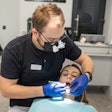
Does race place a role in oral cancer surgery referrals?
It appears to, according to a study in Community Dentistry and Oral Epidemiology (August 24, 2011). White patients are twice as likely to be recommended for surgery for oral and oropharyngeal cancer as black patients, according to researchers from the Medical University of South Carolina.
The researchers weren't surprised to find racial discrimination in cancer treatment, but they didn't expect it to be so prevalent, they said.
"We suspected that racial disparities might exist in the treatment for oral and oropharyngeal cancer, but we didn't expect that the magnitudes of the disparities were so large as appeared in the current study," lead researcher Yanqiu Weng, DDS, MS, a doctoral student in the university's division of biostatistics and epidemiology, told DrBicuspid.com.
“We didn't expect that the magnitudes of the disparities were so large.”
— Yanqiu Weng, DDS, MS, Medical
University of South Carolina
Since blacks and other minorities have been shown to have less access to oral care providers, the researchers stressed the need for primary care physicians to be trained to spot signs of oral cancer.
"As this group has been reported less likely to visit the dentist but instead may see a primary care physician, training physicians with basic oral and oropharyngeal cancer knowledge in these regions may benefit the population," they wrote.
Previous studies have found that racial disparities are also evident in how soon such cancers are diagnosed. In one study, only 20% of oral and oropharyngeal cancer in black patients was diagnosed in the localized stage, compared with 37% in the comparable stage among white patients (CA: A Cancer Journal for Clinicians, January/February 2005, Vol. 55:1, pp. 10-30).
Race also appears to play a role regarding which patients get the best cancer therapy. Racial bias has been reported in cases involving breast cancer (Cancer, November 15, 1992, Vol. 70:10, pp. 2460-2467), cervical cancer (Obstetrics & Gynecology, October 1999, Vol. 94:4, pp. 509-515), and lung cancer (New England Journal of Medicine, October 14, 1999, Vol. 341:16, pp. 1231-1233).
Socioeconomic status a key factor
For the current study, Dr. Weng and a colleague analyzed several databases from the National Cancer Institute (NCI) and the U.S. government. The databases included 68,445 cases of oral and oropharyngeal cancer from 1988 to 2005 that targeted the tumor site and rural/urban status of the patients.
Separating the effects of social, economic, and cultural factors in racial disparities research is difficult, Dr. Weng noted.
"However, measures reflecting low socioeconomic status (SES) such as poverty, inadequate education, and lack of health insurance are believed to be the structural barriers associated with racial minorities to limit access to optimal healthcare and contribute to the elevated risk of oral and oropharyngeal cancer," he and his colleague noted.
Age, gender, marital status, poverty indicator, and tumor stage did not show any significance in the study.
The racial disparity was most obvious among rural patients with lip and buccal cancer, with a fourfold increase in the odds of black patients not being recommended for surgery. It was least evident in urban patients with oropharyngeal cancer, with only a 20% increase in odds among black patients.
"These results underscore the necessity of improving healthcare accessibility for racial minorities, especially in rural populations," the researchers said.
The results also suggested that elderly single men from poor counties with late-stage cancer were less likely to be recommended for surgery. Interestingly, racial disparities regarding treatment decreased as patients got older, the researchers found.
The study authors found that racial disparities in surgery recommendation are least obvious in posterior-site cancer (oropharyngeal cancer) and most obvious in anterior-site cancer (lip and buccal cancer). They surmised that this is due to the fact that most oropharyngeal cancers are not diagnosed until they are in the later stages of development, which may lead to a more "standard" treatment for both black and white patients.
"As research on social categorization and stereotyping has pointed out, it is unrealistic to expect physicians to view each patient with complete objectivity and impartiality," the authors noted.
Other factors
The effects of managed care systems of healthcare and the pressures of modern life are also factors, the researchers added.
"Unfortunately, time pressure, the need to make quick judgments, and heavy cognitive load make physicians one of the most vulnerable groups for using stereotypes," they noted.
Here again, socioeconomic status also contributes to the disparities in healthcare services.
"Owing to low income, inadequate education, and lack of insurance coverage, patients with lower SES have limited access to routine health examination, which might contribute to higher cancer incidence and delayed cancer treatment," the study authors wrote.
In fact, oral and oropharyngeal cancer patients from low-income areas were half as likely to be recommended for surgery than those from other areas, they found.
"In this study, we found that black patients were less likely than white patients to be referred for surgery for oral and oropharyngeal cancer irrespective of their cancer stage and SES," the researchers wrote. "This evidence provides support for the hypothesis that health and human service providers contribute to institutional racism in the current heathcare system."
The findings underscore the persistence of racial disparities in healthcare in the U.S. and demonstrate the urgent need to improve accessibility to high-quality healthcare among racial minorities, particularly in rural areas, they concluded.



















